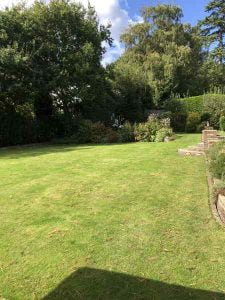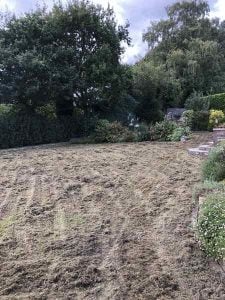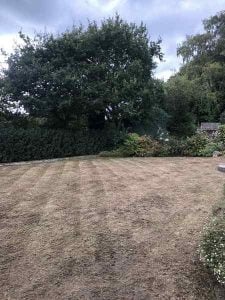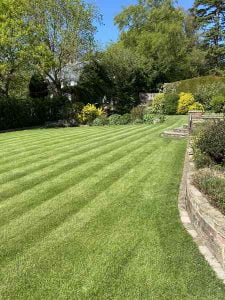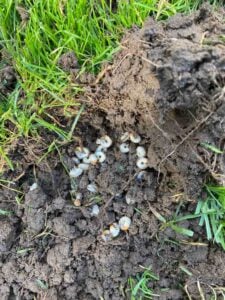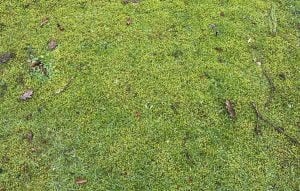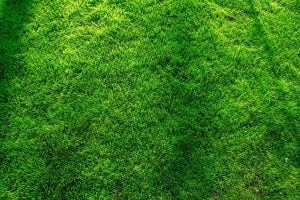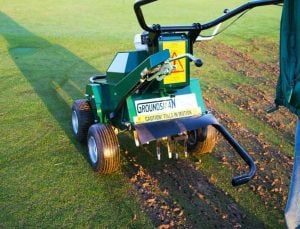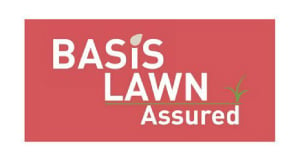What is lawn scarification?
Scarification is an essential mechanical process to remove the build up of damaging thatch and moss in your lawn.
Every lawn is different, meaning scarification must be adapted for the lawn condition, weather, time of year and what you are trying to achieve. Some lawns only need a light scarify each year to reduce thatch; those lawns will recover quickly. Lawns in poor condition with lots of thatch or moss will need a really heavy scarify. As a result this can strip the lawn back to almost bare soil, needing separate overseeding and top dressing.
Be warned, the lawn will often took bare, patchy and not very green afterwards. That is normal, but can be alarming the first time you see a scarified lawn!
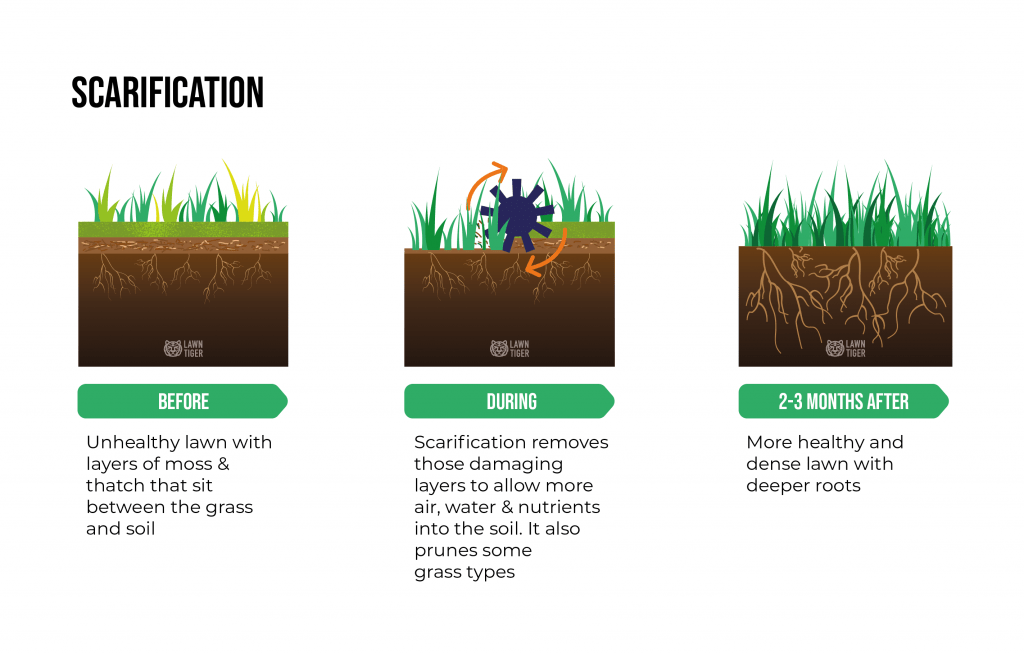
Why should I scarify my lawn?
Over time most lawns will build up layers of thatch and moss. If left in place it will cause may issues.
- Reduces water, air and nutrients from getting into the soil. Your lawn will never look it’s best
- Increased chance of lawn diseases taking hold
- Less responsive to fertilisers
- More water is needed to keep the lawn healthy
- Moss will easily grow and spread
- More difficult to mow and achieve a good finish
Thatch – what is it?
Thatch is a build up of anything organic based that’s fallen on the lawn such as grass clippings, leaves, grass roots. New grass growth can push up the older stems/shallow roots nearer to the surface and create a matted layer. In a healthy lawn that essential soil microbes help digest that. That will act as a sponge over the lawn limiting air, water and nutrients reaching the soil where the grass plant roots can absorb them. The thatch layer holds onto water allowing moss to easily grow on top.
When is the best time of year to scarify a lawn?
In the South East of England, Spring or early Autumn are usually the ideal times. A lawn needs several weeks to recover, so timing it when the grass will actively grow is essential. The weather and lawn soil conditions before and after scarification are important considerations. Too hot and dry or wet and cold may not give the best results. Don’t wait to scarify for when you can see a visible sign of the problem; moss and thatch or a lawn not looking its best.
Our recommendation is to view scarification as an essential maintenance task, typically every 1-3 years but it varies depending on your lawn grass type and how it’s used and looked after. A lighter scarify helps avoid a thatch or moss infested lawn. The fix that will be time consuming, very hard work and will take months to recover from a heavy scarification.
Which type of scarifier tools or machines are best?
- A metal spring tine rake. It’s really hard physical work and does not do a good job. It can’t get at dense, matted thatch or thatch sitting just below the surface. We don’t recommend this approach.
- A lawn rake machine. These slightly better than a manual spring tine rake. They can be useful for teasing out some light thatch above the soil surface but will not effectively scarify a lawn. Typically these machines are cheap and easily available in garden centres and online but will struggle for anything more than a light scarification.
- A dedicated petrol scarifier with fixed or flail blades. This is the only way to effectively and efficiently rid your lawn of thatch and moss. These machines have more powerful engines and the metal blades are excellent at lifting out thatch and moss. Lawn Tiger only use this type of professional, heavy duty machine as we know it gives the required results.
How to scarify your lawn?
- Mow the lawn very short. Shorter grass will give better results and reduce damage to the grass plants.
- Scarify up and down the lawn like you would mow. Clear up the debris and mow again. It will produce far more green waste that you expect! Unless your lawn is tiny, don’t bother with the scarifier collection bag. Use rakes or a leaf blower.
- Repeat step 2, change direction or the scarify each pass, until all thatch /moss is gone. Plan for at least two passes.
- Have a well earned sit down and admire your hard work!
Get help from the experts
If scarifying seems scary or just too much work, get in touch with us for some friendly advice on how we can improve your lawn. Call 01293 974358 or email [email protected]. To get started sooner, use our quick and easy online quote tool
